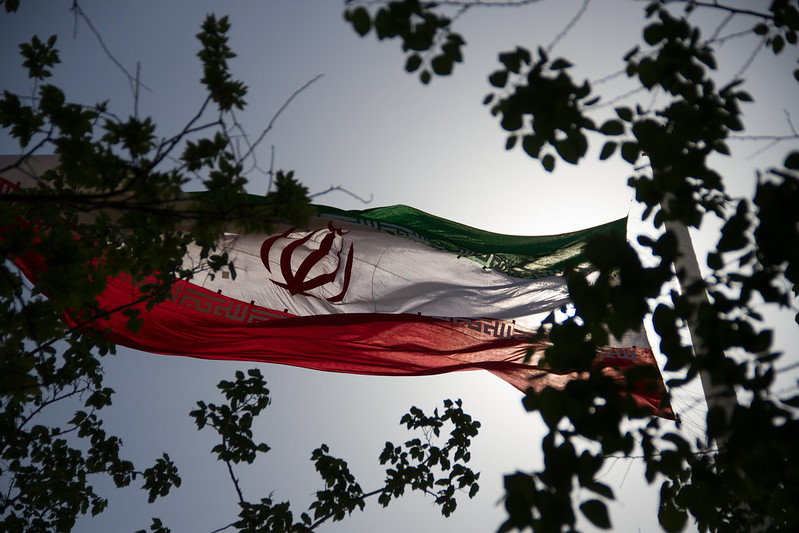On the night of Friday, November 15, 2019, the Islamic Republic of Iran announced that the price of fuel would triple from the following day. The sudden news caused a great deal of concern among families. Increasing fuel prices results in increasing transportation prices and raises the price of everything.
That night, protests took place in several cities, including Tehran, Mashad, Ahvaz, Kermanshah, and Sanandaj. Officers were settled at some gas stations to avoid possible conflicts. The next day, Saturday, November 16th, protests spread to the cities of Isfahan, Kerman, Qazvin, Mahshahr, and more.
Thousands of protesters took to the streets chanting slogans against inflation and the spread of poverty. The content of the slogans mainly referred to economic issues. They worried that by continuing this situation, purchasing power declines and class conflict increases. Protesters sometimes chanted political slogans and accused the ruling class of not being able to run the country and putting pressure on the workers.
The protests of November 2019 did not remain limited to the high price of fuel, and in fact, its background dates back several years. The government repeatedly suppressed protesters at various times and ignored workers, women, and religious and sexual minorities. That is why the wave of these protests spread rapidly.
Mohsen Renani, Professor of Economy at the University of Isfahan and researcher in the field of development, sees Iranians’ protests as deeply desperate and believes that the protesters mostly were born and raised in the years after the 1979 Islamic Revolution. He believes the young generations understand the modern world better.
As the protest rallies spread on Saturday, November 16th, Iranian security agencies sent threatening text messages to the subscribers of some citizens’ cell phones, threatening that these rallies were illegal and that they could “legally” prosecute the participants.
The same day, videos, circulated in cyberspace, showed shootings in some cities and the killing of innocent people. This angered everyone, and they criticized the government. It was after this incident that the Internet was cut off all over the country and users could only access some internal websites such as banks or government-affiliated news agencies. They eliminated the possibility of using Gmail, Instagram, and any foreign websites, and people could not connect with people abroad to share the real news.The experts estimate the total damage as between $369 million and $1.5 billion during this period.
The New York Times, calling the November 2019 protests “the biggest unrest” in Iran in 40 years, reported on December 1, 2019, that at least 180 people had been killed.
Government-affiliated media, such as television, on the other hand, censored the news and called the protesters rioters who were dangerous to national security. After about ten days, when the Internet gradually became connected in the cities, people started publishing videos and photos. Many families reported that their children and siblings had been killed by officers. This number was about 200 in the early days, but then, with the spread of information, it reached 1,500. Many families were afraid to say a word about what had happened to their children or relatives because officers could arrest other members. In addition, more than 8,000 people were detained for protesting against the inflation, and their families knew nothing about them for a long time, including even whether they were alive or dead. Among the deaths, 17 were under the age of 18.
Now, after about eight months, the government wants to execute three students, Amirhossein Moradi, Mohamad Rajabi, and Saeed Tamjidi, who were detained during last year’s protests. Millions of Iranians protested after the verdict was announced.
The volume of protests was so large that the phrase “no to execution” in Farsi became a trend on Twitter for hours, and was tweeted about 5 million times. It is worth mentioning that political activists such as Masih Alinejad, famous artists such as Asghar Farhadi, Taraneh Alidoosti, Parviz Parastui, Ebi, Googoosh and Golshifteh Farahani and athletes such as Rashid Mazaheri protested against the court and demanded the release of these three students.
Before the announcement of the verdict, Babak Paknia, Amirhossein Moradi’s lawyer, had said that his client had no access to him while he was in jail, and the court didn’t allow anyone to visit or even call. Following the Twitterstorm and the outcry against the sentence, one of the judges of the court did not approve the sentence and requested further investigation.
The lawyers of these young men announced in a joint letter that the head of the Supreme Court agreed to refer the case to one of the branches of this court for reconsideration.
During this period, the cyber army of the Islamic Republic was widely active in cyberspace, especially on Twitter and Instagram, to show that these three students are criminals and are accused of murder, rape, robbery with firearms, and bombing. However, the lawyers have repeatedly denied this. Their crime was only to protest against the high price of fuel, of course, if we have to consider protesting a crime!
The unity of the people in the face of these accusations and their support of three young men who are still university students have forced the Islamic Republic to retreat. The court decided to re-examine this case. Millions of Iranians are still debating the possibility of execution, and it remains vague.
Fatemeh, one of the protesters who is 22 years old and a university student, believes that times have changed and people have become more aware. They no longer believe everything they hear. The answer to the protests’ questions is not bullets and blood.
Image credit: David Sandoz

